Introduction
The WW50 is a 50 mile foot race consisting of 5 x 10 mile loops on forest trails, entirely within Wendover Woods. Runners must reach the finish within 15 hours to be elgible for awards. There are further cut offs at every aid station on route.
Course and Trail Conditions
The race route consists of 5 x 10 mile loops on forest trails and tracks within Wendover Woods, woodland operated by Forestry England. The course mixes some of the most enjoyable trail running to be found anywhere, with wide, soft trails including smooth descents and runnable climbs, but counters that with some short sharp ascents and descents along the ridge line. Runners will work hard for a finish at what we hope is a classic in the making. To add some extra excitment, this will be the fourth and final race in the 50 Mile Slam.
The route has 10,000 feet of climb, and 10,000 feet of descent.
Runners will meet at 'Trig Point Field' between 0700 and 0900 on race day. A short/ 0.3 mile walk will then be led to the start within the woods. There will be a race briefing at the start 0900 and the race will start at 0930. Final Cut Off is at 0030 or 15 hours total time elapsed.
Rules
All rules are at the final discretion of the race management team. No challenges will be permitted.
Runners must carry the following mandatory equipment at all times:
There will be kit checks prior, during and after the race. Runners must carry the following mandatory equipment at all times. A time penalty of one hour will be imposed for any item found to be missing at any point on course. Please refer to this page for explanations on the inclusion of the below items.
There are many options regards kit for fulfilling these requirements and those of other events. We stock what we believe to be the best options at our online store available by clicking here under the Mandatory Gear Section. Please ask us if you have any questions.
- Fully Charged Mobile Phone including the numbers for the Race Medic and Race Director (on the number you have given at registration)
- Survival Blanket: 1.4m x 2m minimum
- Whistle
- Waterproof Jacket: Gore-tex or similar, minimum 10000mm+ & must have sealed seams.
- Warm Hat - Beanie Hat or Buff (either are accepted)
- Gloves
- Long sleeved base layer or fleece top - This must be carried separately from the start and kept dry, for use only in an emergency. Starting in 2 layers is not a substitute.
- Cup or Mug
- Any runner starting any loop after 1300 must take a primary light source/ head lamp out with them on the course - Minimum 100 Lumen
- Any runner starting any loop after 1300 must take a Back Up Light source out with them on the course - Minimum 100 Lumens
| # | Rule | Runner Action | Penalty |
|---|---|---|---|
| 1 | There will be no unofficial runners. | Unofficial Runners/ Running without a registration or Running under another name | Lifetime Ban at RD Discretion |
| 2 | Each runners bib number must be worn on the front of the body and must be easily visible at all times. | Bib number not visible on front | One Hour Penalty |
| 3 | Runners must follow the marked trail/ course at all times. Any runner caught deliberately cutting the course will be banned from taking part in future Centurion events. | Short-cutting the route knowingly | At the RD's Discretion |
| 4 | Each runner must complete the entire course under his or her own power. | Receiving powered assistance ie. vehicular, bike, horse, or short rope from pacer | DQ |
| 5 | Runners may not store supplies of any kind along the trail. | Storing Supplies along the trail | Two Hour Penalty |
| 6 | Each runner must be checked IN to all aid stations. You will be disqualified if your time is not registered at every aid station. | Check In at All Aid Stations | At the RD's Discretion |
| 7 | Cut-off times will be strictly enforced. There are cut offs at EVERY aid station. Runners leaving any aid station after the cut off will not be listed as official finishers and will not be eligible for awards. | Continuing/ leaving aid station after cut off | DQ |
| 8 | Injection of PEDs or Fluids/ IVs by non-official race medical personnel | Injection of PEDs or Fluids/ IVs by non-official race medical personnel | DQ and Lifetime Ban |
| 9 | Littering of any kind will result in immediate disqualification. Runners caught littering will be banned from all future Centurion events. Please respect the natural beauty of our trails and the right of everyone to enjoy them. Littering will threaten our use of the trails and the future of the race. | Littering by competitor or crew | DQ |
| 10 | Any runner who is unable to finish the race must personally inform the aid station captain of the nearest checkpoint of their decision to withdraw. HE OR SHE MUST HAND IN THEIR RACE NUMBER TO THE AID STATION CAPTAIN AT THAT TIME. This serves as official notice of a runner’s withdrawal from the race. Runners who leave the course without turning in their number will be classified as “lost,” initiating serach and rescue, for which the runner will be charged. | Not informing organisers of withdrawal from event | DQ and ban at race directors discretion |
| 11 | Crews are not permitted at any time. | Crew assisting runner | DQ & Lifetime Ban at RD Discretion |
| 12 | Minimum age on race day is 20 | Providing false information relating to age on registration form | Lifetime Ban |
| 13 | Pacers are not permitted at any time | Pacers accompanying runners | DQ |
| 14 | Runners must carry with them AT ALL TIMES the mandatory equipment required. | Missing Item of Mandatory Kit | Minimum of 1 hour penalty per missing item |
| 15 | There will be mandatory gear checks at the start, on route, or at the finish. Failure to comply with the gear checks will result in disqualification. | Refusal to have obligatory equipment checked | DQ |
| 16 | Runners are not to be accompanied by dogs at any time whilst on course. | Accompanied by dog | DQ |
| 17 | Any athlete who has been determined to have violated anti-doping rules at any time - through IAAF, the World Anti-Doping Agency, UK Anti Doping or any other National Sports Federation is ineligible for entry into any of our events. We reserve the right to conduct pre and post-competition testing for any and all performance-enhancing drugs (PEDs) listed on the current WADA Prohibited List. Any athlete who refuses to submit to anti-doping controls, if selected for testing, shall be disqualified and subject to a lifetime ban from our events. | Previous Doping Infraction or refusal to comply with testing if selected. | DQ and Lifetime Ban |
| 18 | Runners must check in at the end of each loop before visiting their car | Failing to check in before visiting vehicle | DQ |
| 19 | Runners must at all times comply with any instruction given by race management, staff and volunteers. | Refusal to comply with an order from the race directors, race staff, doctors or rescue personnel. | DQ & Lifetime Ban at RD Discretion |
RULE VIOLATION PROCEDURE
Any protests to a ruling or of a runner to runner violation must be submitted by a registered entrant and must be lodged using the following procedure:
1. Report the alleged violation to the runner, his/her crew or pacer as the incident occurs. Enlist a fellow witness to the alleged violation if possible.
2. Report the alleged violation with the runner’s name and number to the next available aid station staff.
3. Report the alleged violation in writing at the finish line to the race director. All protests must be submitted by 6pm on Monday following the race. Written protest must include the name of the person who lodged the complaint.
4. Decision on all violations and rules is at the final discretion of the Race Management ONLY. There will be no challenges after that decision.
Wendover Woods are used by, but not limited to, horse riders, walkers and mountain bikers. Please be aware of other people whilst you are running and be as polite and courteous as possible to them, making way when necessary, particularly to horses. You do not have priority over any other users out on the course, most will be totally unaware of the event taking place.
Crew and Pacers
Crews are and pacers are not permitted at any stage.
Supporters
Supporters are welcome anywhere out on course, with the exception of Hale Lane Aid Station. Please note, nothing must be handed to or received from runners out on course, that is deemed as crewing.
Medical
The Wendover Woods 50 is an extremely challenging event and participation presents numerous medical risks, many of which can be extremely serious or fatal.
Participation in this event is at the runner’s own risk. Although medical personnel are positioned at various points along the course, the inaccessibility of much of the trail will make it difficult or impossible for medical assistance to reach the runner immediately.
Medical support at the race is under the direction of the Race Medical Director who’s details to be used in an emergency will be made available to all runners at registration, further to that of the Race Director.
The medical team on site for the weekend is provided by Code Blue Medical Services. At any one time during the race there will be a roving team out on the course. There will also be a static medical team at Race HQ & at the Hale Lane Check Point for the duration of the race.
It is important for each entrant to recognise the potential physical and mental stresses, which may evolve from participation in the race. Runners may be subject to extremes of heat, cold, hypothermia, hyperthermia, dehydration, hypoglycemia, hyponatremia, disorientation and mental and physical exhaustion. We and the medical staff strive to work with runners and will do all we reasonably can to ensure “safe passage” to the finish line, but ultimately runners must understand their own limitations. Adequate physical and mental conditioning prior to the race is mandatory. If you have not been able to prepare properly, do not attempt to run. Runners entering an ultra distance trail event must understand that the trail is at times remote and access via anything other than on foot is not possible. You must be capable of self sufficiency.
Runners should appreciate the risks associated with participation in this event. Actions may have to be taken on your behalf under extreme time constraints and adverse circumstances. We will make every effort to give assistance whenever possible but ultimately and primarily you are in charge, and you are likely to be solely responsible for creating your own crisis that we must then respond to. Be careful, be responsible, and do not exceed your own abilities and limitations.
Some of the main risks, but certainly not all of them, are listed here. These should be understood and remembered by all runners, before and during the event. Please note that death can result from several of the risk conditions discussed below.
1. Renal Shutdown: Renal shutdown occurs from muscle tissue injury which causes the release of myoglobin, a protein material, into the blood plasma. Myoglobin is cleared from the blood stream by the kidneys and will look brownish-colored in the urine. Adequate hydration will help flush myoglobin through the kidneys. Overwhelming amounts of myoglobin may clog the filtering system of the kidneys either partially or totally. If not treated, renal shutdown can cause permanent impairment of kidney function. IT IS CRUCIAL TO CONTINUE HYDRATING USING ELECTROLYTE FLUIDS DURING THE FINAL HOURS OF THE RUN AND FOR SEVERAL HOURS/ DAYS FOLLOWING THE RUN OR UNTIL THE URINE IS LIGHT YELLOW AND OF NORMAL FREQUENCY. There is extensive research to support the claim that NSAIDs (ie. ibuprofen/ etc) greatly increase a runners chances of reaching a stage of renal shutdown. We will not provide Ibuprofen at any aid station and you are strongly advised not to take it during or immediately after the run. More information on this subject can be obtained by contacting the race director.
2. Effects of Cold/Hypothermia: Temperatures in November in the UK are usually around 6 degrees celsius in daytime, however temperatures can be much colder. With wet conditions and/or moderate to high winds runners will be open to exposure during the event. Hypothermia is a serious risk when runners energy reserves have been depleted from up to 15 or more hours of running. Hypothermia can strike very quickly, particularly when pace slows from exhaustion or injury. The initial warning signs of hypothermia often include lethargy, disorientation and confusion. The runner will feel very cold with uncontrolled shivering and may become confused, unaware of the surroundings, and may possibly be an immediate danger to his or herself. Staying well-nourished, adequately hydrated and appropriately clothed will help avoid hypothermia.
3. Risks Associated with Low Sodium and Chloride Counts: Low sodium levels (hyponatremia) in ultramarathon runners have been associated with severe illness requiring hospitalisation. It is important for long-distance athletes to use fluids or eat foods containing electrolytes/ salt to replace the water and salts lost during exercise. WATER INTAKE ALONE IS NOT SUFFICIENT, as water intoxication and possibly death may result. This problem may in fact worsen after the Race, as the non-electrolyte-containing fluid which has been accumulating in the stomach is absorbed. Potassium and calcium replacement may also be important, although these levels change less with fluid loss and replenishment. Signs and symptoms of hyponatremia include; weight gain, bloating, nausea, vomiting, headache, confusion, lack of coordination, dizziness, muscle twitching/cramping and fatigue. If left untreated, it may progress to seizures, pulmonary and cerebral edema, coma and death. There are two ways to put oneself at risk of hyponatremia; 1) over-hydration (with water or even electrolyte-containing sports drinks) and 2) replacing sweat with hypotonic fluids. Risks of hyponatremia include weight gain and low sweat rate.
Risks of hyponatremia can be minimised by eating salted foods a few days prior to the race, matching fluid and electrolyte intake to sweat losses and monitoring weight. The best way to achieve proper electrolyte and fluid balance is to hydrate with fluids containing proper amounts of electrolytes and to replace with sodium-containing foods or supplements, if required, and as determined during your training. Electrolyte fluids should be consumed for a good period (a few hours) after the race. Once the gut is working and adequate hydration has occurred, the normal balance of thirst, hunger, digestion and kidney filtration will maintain the proper balance of fluids and electrolytes. Water or dilute sports drinks should be consumed only after the onset of urination.
4. Vehicle Hazards: There are three areas on the course where runners must be watchful for vehicles. Road crossings are not all marshalled.
5. Use of Drugs: No drugs of any kind should be taken before, during or immediately after the race.
7. Injuries from Falling: Falling is an ever-present danger on trails, with potentially serious consequences. Much of the trail is narrow, uneven and rutted and some sections are very steep. The course may be covered with sitting water, snow or ice which will create significant challenges and potential hazards to runners.
8. Overuse Injuries: Obviously, innumerable overuse injuries can occur, especially in the knee and the ankle. Sprains and fractures can easily occur on the trails. Blisters may also halt progress.
9. Common Fatigue: One of the dangers you will encounter is fatigue. Fatigue, combined with the effects of dehydration, hypothermia, hyperthermia, hyponatremia, hypoglycemia and other debilitating conditions can produce disorientation and irrationality.
10. Difficulty in Gaining Access to or Locating Injured Participants: Much of the trail is inaccessible by motor vehicle. Accordingly, in spite of the many layers of safety precautions instituted by the race management (including radio communications, sweepers, foot patrols and other emergency services and medical personnel at many checkpoints), there is absolutely no assurance that aid or rescue assistance will arrive in time to give you effective assistance should you become sick, incapacitated or injured.
What to do in a Medical Emergency:
If there is a problem and you need the Medical Team either to attend or just for advice, call: 07421 005671 at ANY time during the event.
This will put you through to the Event Medical Team Leader who will co-ordinate any response and/or give advice, Our team will be happy to talk you through Emergency Aid Procedures on the phone whilst they are on their way to you.
If you are ill/injured or have found someone who is ill/injured and need the medical team to attend your location, we’ll need to know the following:
Your Phone Number (In case we need to call you back)
Where You Are. We’re also able to access Lat/Long if you have a GPS with that capability.
Your name and/or Runner Number and that of the Casualty if Different.
What’s wrong? What do you need the medical team for?
If you are not the casualty, but have found them, please stay with them until help arrives, whilst this may impact on your personal best, at least you’ll have a good excuse
Make the casualty as visible as possible and keep them warm, It is mandatory for each runner to carry a “Foil Blanket” which should be used if you're in any doubt at all.
Do not allow the casualty to move UNLESS they are in an unsafe position, e.g. in the middle of a busy road and there is no other option.
Do not give the casualty anything to eat or drink until the medical team arrive as they may require surgery or medical procedures at hospital and food/drink will delay this being able to happen.
Be ready to flag down the Medical Team when they are close by.
The phone used to call the Medical Team must remain with the casualty until the medical team arrives, if we’re having difficulty finding you, we will call you back.
Calling 999
General Rule: If the Casualty is NOT BREATHING, is likely to STOP BREATHING imminently, call 999 for the Ambulance Service, then the Event Medical Team (We ask that you call both because we may be close by and can assist until the 999 Service Arrives), for all other Injuries/Illnesses, call the Event Medical Team on the above number FIRST and we’ll take it from there.
If you just need advice, give the Medical Team a call on the number above, or speak to one of the marshalls.
Non-Medical Risks and Dangers
There are other significant risks to runners during the race which do not fall under the medical category. The major ones are listed here and all runners should be aware of these prior to race day.
1. Social Hazards. The course makes its way through remote sections of woodland. There is always the opportunity for undesirable characters to be on or around the trail and the chance that they may cause trouble for runners. Runners who want to listen to music should use headphones should be aware of their surroundings at all times on the trail.
2. Road Crossings. There are four road crossings and a very short section of the trail travels along the road. The junctions will not all be marshalled, you the runner must be alert and aware at all times when emerging on to roads. We advise all runners to recce the route prior to race day. It is YOUR responisibility as a runner to navigate all road crossings safely.
3. Getting lost. Race staff and the volunteers do their best to provide a marked trail, but it is necessary for runners to continually remain alert as they travel.
Aid Stations
These type of running events survive because of the incredible volunteers who work the aid stations. Without them there would be no race. There are a total of 10 aid stations, including the finish location.
The aid stations are well stocked with provisions suitable for all dietary requirements. Vegetarian, Vegan and Gluten Free:
- Precision Hydration Gels, Chews and Electrolyte Drink
- Tailwind
- Gu Gels
- Water
- Coke/ Pepsi
- Chocolate/ Sweets/ Biscuits
- Nuts
- Fruit
- Sandwiches and Wraps
- Savoury Snacks eg. Mini Sausage Rolls
There will be hot food at the finish.
The use of Ibuprofen can lead to kidney problems when used in abundance and/or under stressful conditions such as running long distance races. We will not provide these medications at our aid stations. If you feel the need to bring and use your own pain medications or anti-inflammatories, then you are willing to assume the responsibility for their use.
Without the assistance of the volunteers and race medics, there would be no race. Many of these volunteers have spent days preparing for the run and will be out on the course over both Friday and Saturday, assisting runners. They have given up their weekend to insure you the best possible chance of success. Courtesy and sincere thanks from the runners will go a long way to help make their day.
Cut Offs
Cut-off and “pace” times are listed on the Aid Station Chart. Cut-off times reflect the deadlines for LEAVING the aid station. If you return to an aid station after the cut-off, you will be WITHDRAWN from the race. The cut-off times will be strictly enforced by the Aid Station Teams. Anyone leaving an aid station after the cut-off time will be disqualified. This rule is for the safety of all participants. There is NO NEGOTIATION on the cut off times.
Awards
All finishers under the 15 hour cut off will receive a medal (opt outs of receiving awards are available during registration).
Runners crossing the finish line after the 15 hour cutoff will not be listed as official finishers and will not be eligible for awards.
Additional prizes will be awarded to 1st, 2nd and 3rd place Male and Female as well as winners of each Vet Category: MV40, MV50, MV60, MV70. FV40, FV50, FV60, FV70.
Schedule
Saturday 15th November 2025
0715-0900 - Trig Point Field
- Runner parking, registration and bib collection
- Drop Bag/ Finish Line Bag deposit open
0900 - Trig Point Field
- Race Briefing
0915 - Wendover Woods
- Walk to start - Approximately 500 metres
0930 - Wendover Woods
- Race Start
Sunday 16th November 2025
0030 - Trig Point Field
- Final Cut off - Race Finish
15-11-2025
15-11-2025
15-11-2025
15-11-2025
15-11-2025
15-11-2025
15-11-2025
15-11-2025
15-11-2025
15-11-2025
15-11-2025
15-11-2025
15-11-2025
15-11-2025
15-11-2025
15-11-2025
15-11-2025
15-11-2025
15-11-2025
15-11-2025
15-11-2025
16-11-2025















